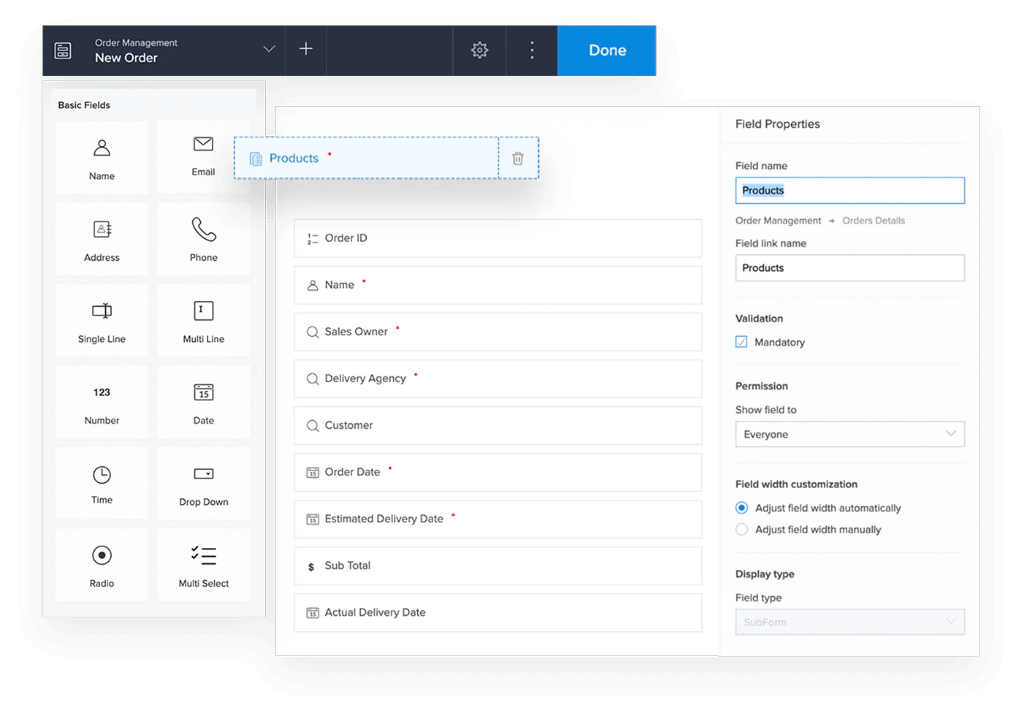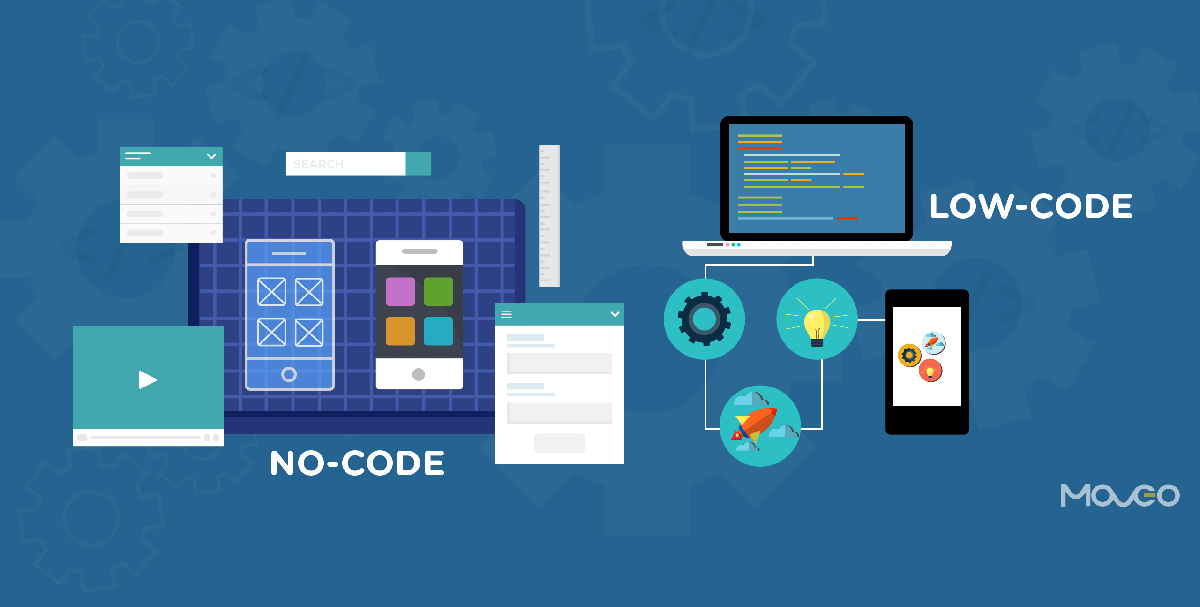Low-code applications offer significant benefits for integration, which is essential when creating applications that are able to seamlessly connect various systems and service. Here are a few major advantages that come with Pre-built connectors and APIs.
An extensive range of connectors. Low-code systems typically include an array of built-in connections to the enterprise system that are widely used (e.g. cloud-based services, databases, CRM). Integration of these systems is made much easier.
API Integration: Many platforms provide out-of-the-box API integration features. This lets developers quickly connect to external data and services.
Usability:
Drag-and--Drop integration Integration tasks are usually accomplished by using drag and-drop interfaces. Developers and non-developers can set up complex integrated systems without writing code.
Visual Workflow Creators: These visually appealing tools used to create workflows and data flow make it easier for users to comprehend the process of integration.
Standardized Integration Methods:
SOAP and RESTful Service Support for web services protocols such as SOAP and REST allows for simple integration with a variety of external systems and applications.
OData and other Standards Support for standards like OData provides easy access to and manipulation of data across a variety of platforms and software.
Real-Time Data Synchronization:
Real-Time Integrations: Lowcode platforms are able to handle data synchronization at a real-time rate between systems and applications, ensuring data is always updated and uniform across an company.
Event-Driven Architect: Certain platforms have events-driven structures, allowing applications to respond immediately to events. This is crucial for interactive and dynamic applications.
Legacy System Integration:
Low-code platforms: These platforms can be used to connect older systems to modern systems. They're a great way to upgrade your IT infrastructure without having to redesign everything.
Data Migration Tool: Built-in migration tools permit data to be transferred from older systems to new applications which are built on low code platforms.
Third-Party service integration:
Cloud Services Integration: The seamless integration of cloud services, like AWS Azure, Google Cloud, allows for easy deployment and scaling-up of applications.
Integration of Business Applications Lowcode platforms can be used to integrate various business applications like Salesforce, SAP, Microsoft Dynamics etc., creating a cohesive workflow among different business functions.
Simple Data Management:
Unified Data Models: Certain lowcode platforms provide unification of coding models that simplify data management and integration, as well as synchronization across various systems.
Data Connectors: Data connectors that are pre-configured to allow easy access to and manipulation of data derived from various sources.
Security and Compliance
Secure Integrations - Low-code platforms have been designed to make sure that integrations adhere to the security protocols and standards. This protects information both during its travel and when it is stored.
Compliance Features: These platforms usually have features to ensure that the integrations meet the requirements of regulatory agencies, like GDPR or HIPAA. This gives security for companies handling sensitive information.
Extensibility:
Low-code platforms can often accommodate complex integration needs by including custom code or scripts. They offer flexibility but without sacrificing their accessibility.
Plug-in Ecosystem : An ecosystem of plugins and extensions can extend integration capabilities by allowing users to add new functionality as required.
Overall, the low-code platform's capabilities for integration make it a powerful instrument for creating interconnected applications that are scalable and efficient. They can streamline the process of connecting disparate systems, and increase the flow of data. Companies can benefit from existing technology and implement new ones, while ensuring a seamless IT environment. Have a look at the best Low-code Platform for application development recommendations for website recommendations including microsoft azure sql, cross platform app development, driver jdbc, rad application development, cross platform mobile dev, azure sql, application modernization software, push alerts, developing mobile apps, application modernization and more.

Benefits Of Low Code Application Development For Governance And Security
Low-code application development offers a variety of advantages in terms of governance and security. This is vital to ensure that applications conform to laws, are safe and are well managed throughout their lifetime. These are the main advantages.
Unified Management Console (UMC): Low-code applications typically provide a centralized management console that allows administrators to oversee and manage all the applications, ensuring consistent governance across the entire organization.
Role-Based Access Control: These platforms include robust role-based control which allows administrators to set policies and then enforce these policies. This ensures that only those who have authorization are able to modify or access certain parts of the software.
Compliance and Regulatory Adherence
A lot of low-code platforms have built-in compliance functions. These are designed to ensure that applications comply with the industry standards (e.g. GDPR, HIPAA). They offer tools and frameworks that help to ensure the applications are compliant with these standards.
Audit trails and logs Complete audit trails and logging are usually connected. This lets organizations monitor and track changes and access as well as to ensure compliance with internal regulations as well as external regulations.
Additional Security Measures
Data Encryption: Low-code systems generally provide encryption built-in for data at rest and while in transit, making sure that sensitive information is protected.
Security Certificates: Many low-code providers have a security certificates (e.g. ISO 27001 and SOC 2) which demonstrate their adherence to strict security guidelines. They offer an additional level of assurance to clients.
Automated Security Updates
Regularly scheduled updates and patches Low-code platforms usually handle regular patches and updates to security automatically, making sure that applications are safe from latest threats without the intervention of developers.
Security Monitoring Tools: These tools send alerts that are updated in real time, and provide insights into security concerns that might be present.
Data Governance
Data Access Policies These platforms permit organisations to create data access policies and enforce the policies, making sure that the data is only accessible to those who have been granted access. They also ensure the data is used correctly.
Data Masking & Anonymization: Built-in tools for data masking & anonymization safeguard sensitive data, particularly in testing environments and development environments.
Consistent Lifecycle Management of Applications:
Pipelines for development and deployment: Low-code platforms allow for integrated development, including security checks. This provides security throughout the lifespan of an application.
Version Control: Integrated version control is a way to manage modifications and makes sure that modification to the application will be monitored and reversed if needed while ensuring the integrity of the application.
User authentication:
Single Sign-On (SSO). Support for advanced authentication and single sign-on is simple and enhances security.
Multi-Factor Authentication Numerous platforms allow multi-factor Authentication, which adds an additional layer of security when logging into applications.
Policy enforcement and Compliance Monitoring:
Policy Templates: Low-code platforms often have pre-defined templates for policies that help organizations swiftly implement security and governance policies.
Compliance Monitoring Tools: These give continuous monitoring and a report on compliance status. This helps to identify potential issues and tackle them in a timely manner.
Integration into Existing Security Infrastructure:
seamless integration: Low-code platforms have been designed to be integrated with existing security tools and infrastructure, such as identity management systems and SIEM (Security Information and Event Management) solutions, and firewalls.
API Security: API features that protect data and maintain application integrity are built into the API.
Best Practices and Training
Best practices: Many platforms provide guidelines for developing secure applications, and offer best practices. This helps non-developers to adhere to security standards.
Certain low-code companies offer security training to help users build and maintain secure applications.
The governance and security features of low-code applications make sure that they are built and managed in a safe and secure manner. These platforms provide the frameworks and tools necessary to safeguard sensitive information and enforce policies, while ensuring regulatory compliance. See the top Enterprise application development with Low-code Platform for site examples including application modernization, cross platform mobile development, develop web application, cross platform mobile app development, azure sql server, rapid application design, push notifications, cloud software applications, push notifications android, azure sql and more.

The Benefits Of Low-Code Programming For The Development Of Applications In Terms Of The Limitations And Customization
Low-code development offers an unbiased approach to dealing with issues, while allowing for customization. Here are some of the major advantages: Handling limitations
In overcoming Complexity Barriers:
Development simplified: Low code platforms streamline the process by offering templates and pre-built components. This facilitates faster application deployment, even for more complex ones.
A lot of platforms offer guided workflows, which assist developers navigate through complicated procedures. They minimize the risk of making mistakes and help maintain uniformity.
Scalability solutions:
Scalability integrated into Low-Code platforms: Low-code platforms are often equipped with capabilities that permit an scalable architecture. This lets applications take on more load without major redevelopment.
Performance Monitoring: The integrated tools for monitoring performance and optimization ensure that applications are efficient when they grow.
Security and Compliance
Security features integrated into Low-code platform include built-in measures for security such as encryption. Role-based access control and automated compliance check to address the most prevalent security concerns.
Platforms are continuously changing their security procedures as well as measures of compliance, which guarantee that applications are safe from new threats.
Customization Features:
Extensibility:
Low-code platforms tend to incorporate custom code, for instance, JavaScript or Python that allow developers to enhance their capabilities beyond what is standard.
Developers can add customized modules or plugins to address specific business requirements.
APIs and Integration:
API Support: A comprehensive support for APIs facilitates seamless integration with external systems and services, allowing for customizing and connectivity.
Third-Party Applications: Lowcode platforms are often already built with connectors to third-party applications, which makes it simpler to integrate them and customize the application.
Flexible Design for UI/UX
Customizable User Interfaces: Developers can modify and create user interfaces that are in line with the requirements for branding and usability, creating a tailored user's experience.
Responsive Web Design: Built-in design responsive capabilities enable applications to be customized depending on the device and screen size.
Business Logic Customization
Visual Workflow Builds: Visual tools that permit customization of business workflows and rules as well as to design complicated, tailored procedures.
Conditional Logic and Scripting : Platforms support conditional logic, as well as customized scripting to comply with specific business rules.
Data Management
Custom Data Models: Developers can develop custom data models that fit specific needs of the application, ensuring that data handling is customized to the business needs.
Advanced Data Processing: Integration with advanced tools and capabilities for data processing permits customization of the way data is processed and utilized within the application.
The balance between customization and limitations
Frameworks and Standards:
Low-code Platforms Encourage Industry Best practices and standards: Low code platforms encourage adhering to industry best standards and practices. This helps to maintain high-quality, secure and scalable applications.
Governance Frameworks. The built-in governance frameworks make sure that any modifications do not compromise security, compliance or the integrity of the software.
Iterative development and feedback:
Rapid Prototyping. The ability to quickly prototyping and testing customizations allows developers to iterate the app based on user feedback. This allows them to improve the application to better satisfy the needs of users.
Continuous Improvement: Low-code platforms enable continuous improvements. They can be customized and enhanced as business needs change.
User Empowerment
Empowering Citizen-Developers: Low-code platforms can increase the number users who can contribute to improving and customizing applications, by allowing them to customize through intuitive user interfaces.
Training and support: Many platforms include extensive training resources as well as support services to help users in making modifications that work without affecting the performance or stability.
In the end, low-code application development provides a framework that is strong and adaptable enough to meet limitations while still allowing for ample customization. This allows businesses to build and maintain apps that work as well as tailored to specific business needs. All while keeping high-quality, security, scalability, and standards.
